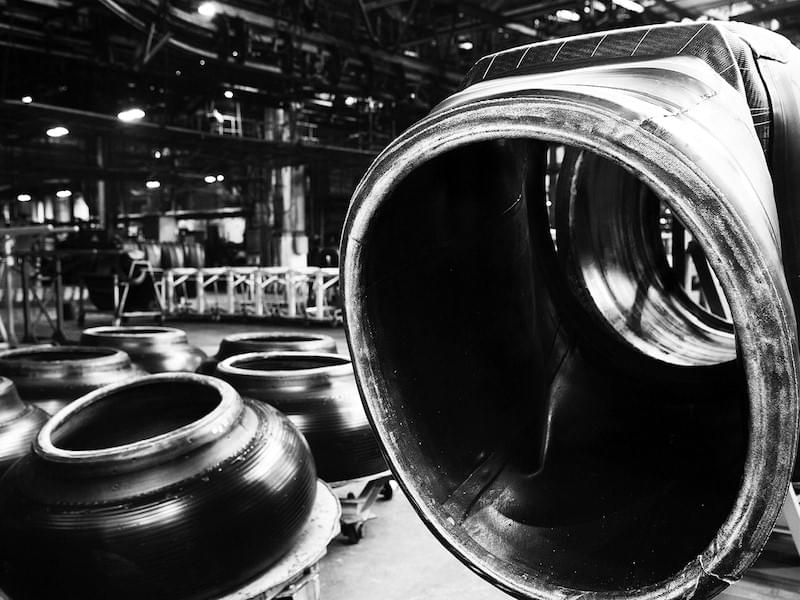The tire industry is a major contributor to the global economy with approximately 2.3 billion units produced in 2020 and an approximate value of $150 billion. These numbers were about 7% lower than the 2019 values due to COVID-19. Most of the industry was entirely shut down for a significant portion of 2020 and although demand is increasing in 2021, supply chain disruptions have caused raw material issues for manufacturers that have hampered production ramp-up, according to a new report from Smithers,
The Future of Tire Raw Materials to 2026.
The growth rate for the tire industry will be determined by how fast it can solve supply chain problems and how fast the public resumes spending on both business and personal travel. The CAGR for the tire industry for 2020-2026 is estimated to be between 0.2 and 1.5% with an estimated 3% growth rate for tire materials for the period.
Total tonnage for tire raw materials is estimated at 52.7 million tons for 2021, according to Smithers’ data.
Economic impact of COVID-19
The effect of COVID-19 on the tire industry and its materials suppliers has been global with the industry being shut down for much of H1 2020. In the US, there was a 25.5% total reduction in passenger tire production with full stoppages in March, April and May. The output was the lowest since 1955, according to preliminary data from the US Tire Manufacturers Association with the loss in production of light and medium truck tires were 18.5% and 21% respectively. The replacement market suffered as well with production down only 8.4% after a strong comeback in the second half of the year.
The total economic impact of COVID-19 on major tire manufacturers in 2020 has been massive, with most companies reporting earnings down significantly. For example, Bridgestone posted its first net loss in 60 years. The financial impact of the pandemic has caused many tire makers to conduct strategic reviews of all their operations.
Raw materials costs
Although there is currently a “fourth wave” of the virus in some parts of the world, with the increased supply of vaccine the long-term outlook for getting past the virus is favorable. There will be, however, long-term consequences from the pandemic -- raw materials costs are proving to be one of them.
Goodyear announced in April of 2021 that for the full year, they are expecting cost of their raw materials to increase by $325 to $375 million largely in the second half of the year, which is approximately double the increase in raw material prices they expected at the first of the year.
Natural Rubber
Natural rubber is an example of a large volume, critical raw material that has impacted tire industry production. 2020 was supposed to be the difficult year with recovery in 2021, but as of March 2021 the natural rubber situation is difficult at best. The issues with natural rubber have been exacerbated by the pandemic and prices have fallen dramatically due to the 2020 measures put in place to control the spread of the virus. The price for natural rubber in Singapore in January 2020 was $1.47/kg but by April had fallen to $1.00/kg and then rose to $1.87/kg by November. As the automotive industry began to come back online, demand spiked and prices have continued to remain high through mid-2021 and are expected to remain high for the foreseeable future.
There is not only a short-term problem with supply (transportation issues and scarcity) but longer-term problems as well. Low prices in 2020 hurt the small natural rubber farmers, who had no capital to invest in new trees and proper care for the existing trees. Plantations went unfertilized, which left them open to disease. This implies the total 2021 harvest will likely be lower than initially anticipated, which will worsen the situation. A long-term effect of these developments is that China will have more control over the world’s natural rubber supply.
Sustainability
Along with the shift to manufacturing and product sustainability will come the massive expense of achieving goals such as carbon neutrality and producing more environmentally friendly tire raw materials. These investments must be made if the industry is to meet society’s expectations. The questions that prevail are how fast will these changes be made and how much pressure will OEM auto manufacturers, replacement tire customers and governments apply to ensure the shift.
Changing technology
Major changes are taking place in tire development and manufacturing processes. “Industry 4.0” is well underway in the tire business. Sensor technology has gone from managing inventory to being able to monitor tire performance, and this technology is being used by truck fleets to monitor fuel consumption and wear. Tire plants are becoming more automated, and workflows continue to be optimized. Some recent examples of vendors applying technology to the tire industry include Cimcorp’s Warehouse Control System, which manages material flow from the mixers to the finished tire warehouse and Pepperl +Fuchs’ Sensorik 4.0 portfolio of intelligent sensors, which allows tire manufacturers to leverage data across all information systems.
